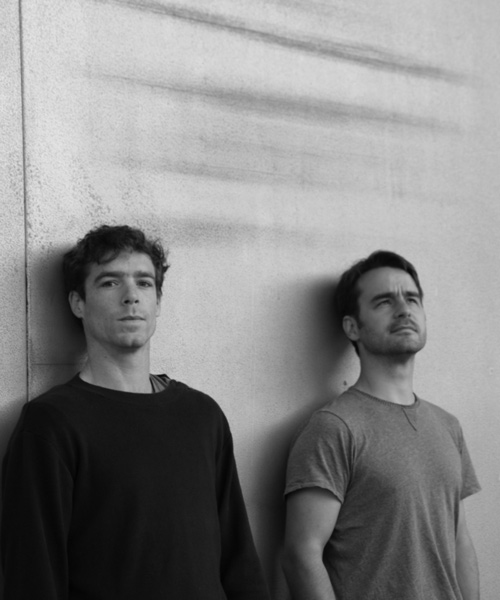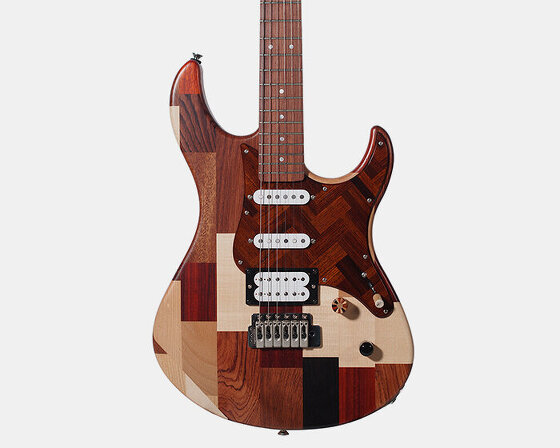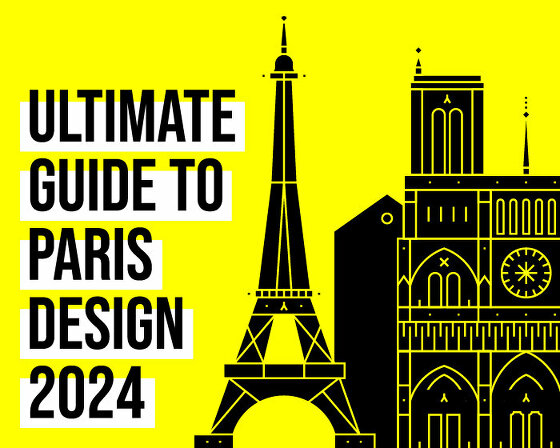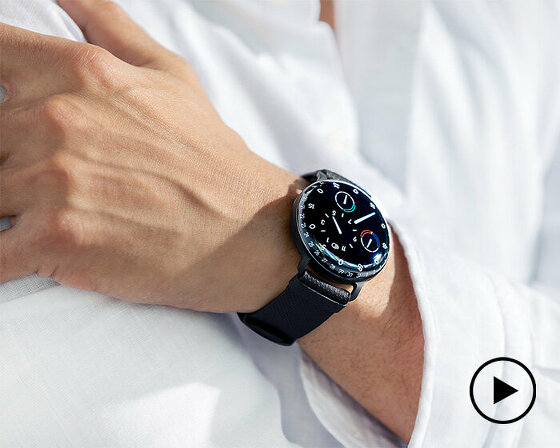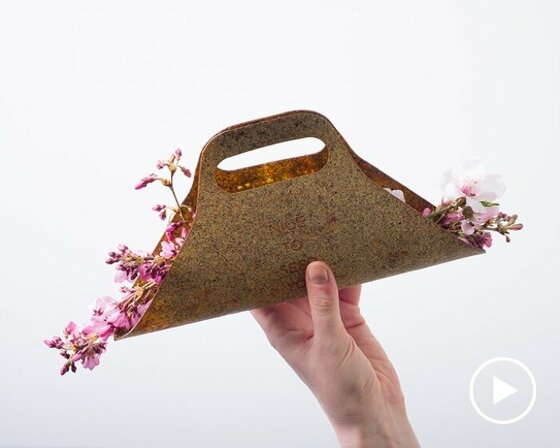led by bruno lemunier and aurélien meyer, atelier blam is a multidisciplinary practice that operates at the intersection of design, fabrication, and architecture. based in nantes, france, the studio specializes in conception and engineering, as well as manufacturing and precise execution of ergonomic, functional, and artistic forms. recently, through an ongoing collaboration with ronan & erwan bouroullec and their creative input, the practice has been able to address a broader reflection on functionality, urban design and installation art in today’s environment.
to learn more about the duo’s work, journalist joana lazarova spoke with atelier blam’s bruno lemunier and aurélien meyer who discussed their approach to design as well as some of their recent projects. read the interview in full below.
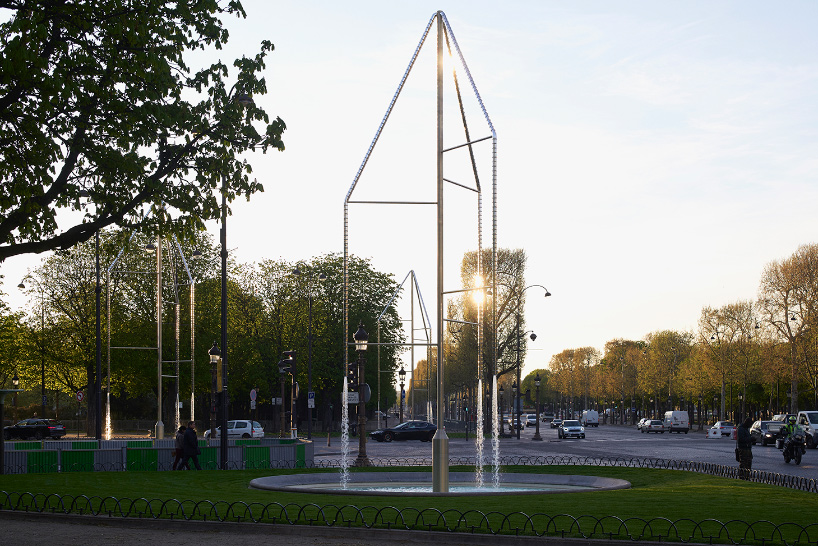
the champs-elysées fountains by ronan & erwan bouroullec | image © julien lanoo
main image: bruno lemunier (left) and aurélien meyer (right) | © natacha poutoux
joana lazarova (JL): can you tell me about your backgrounds?
aurélien meyer (AM): we are influenced by diverse fields. in our team, we have architects, engineers and designers, who bring many different skill sets to the table and who enrich our discourse — from aesthetics to the technical production of an object. I studied fine arts, but later on, I worked for a big company in france that produces machines for public space, and this is how I got interested in mechanical engineering.
bruno lemunier: I have a background in mechanical and naval architecture, and I’ve been working in this field for a while. it’s different from art and design, but these realms do share a lot of similarities – they all embody an act of translation from design to realization. a few years ago, aurélien and I ended up working at the same company, and later on, we founded atelier blam.
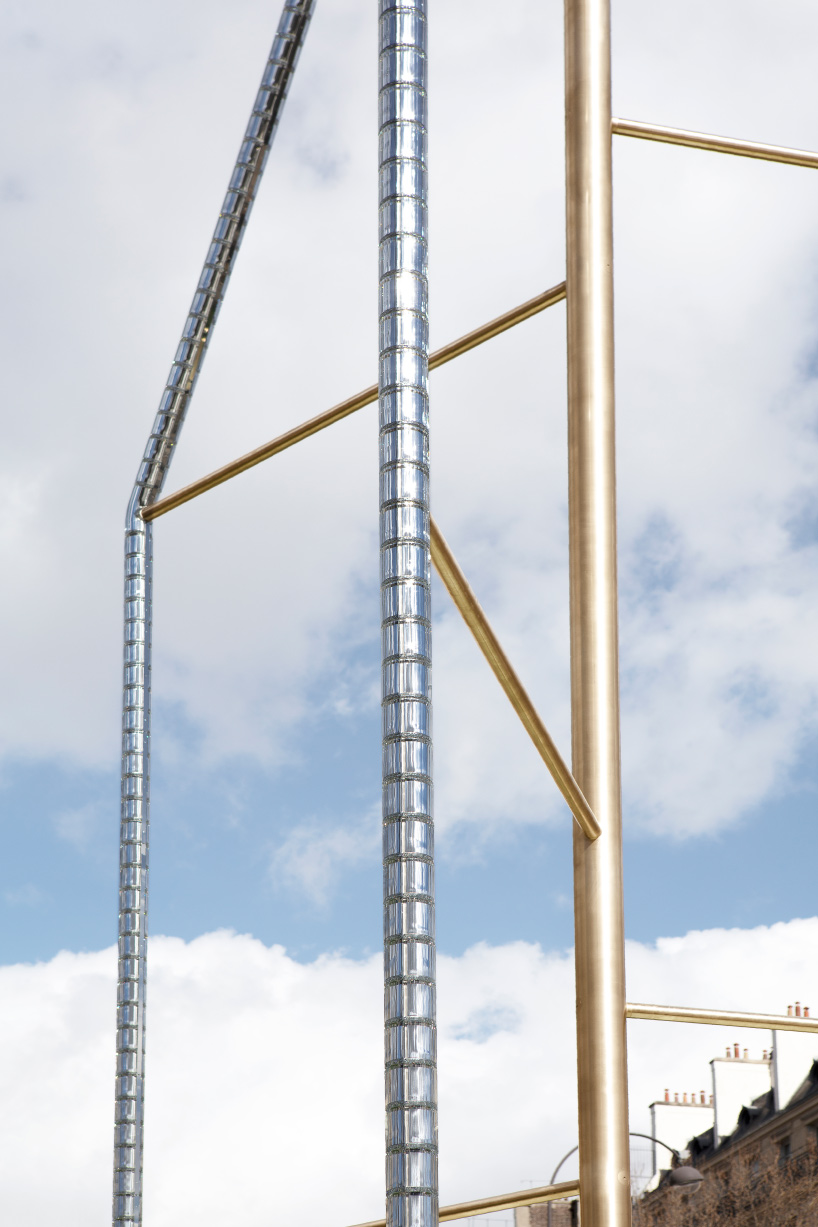
detail of the champs-elysées fountains by ronan & erwan bouroullec | read more here
image © claire lavabre / studio bouroullec
JL: you’ve worked on multiple projects with ronan & erwan bouroullec, and most recently – on the champs-elysées fountains in paris. what was the most challenging aspect of the engineering and manufacturing process?
AM: ronan & erwan bouroullec thought of the fountains as monuments.they had to be exceptional and long-lasting, not obtrusive, slender, and in harmony with the urban environment. to achieve this, some of the parts were even finished by hand. in that sense, one challenging aspect was to reconcile the creation of new forms in spatial and highly public terms with the current industrial capacity.
BL: a big task was also to adapt the principles of rotation, water and light to a public space. we wanted to introduce the concepts of durability and harmony in the urban environment, and one focus of our work was addressing how all of this could be achieved through the dimension of the physical components. also, we are very lucky because we are a small company and a lot of people entrusted us with carrying this project out from design to installation.
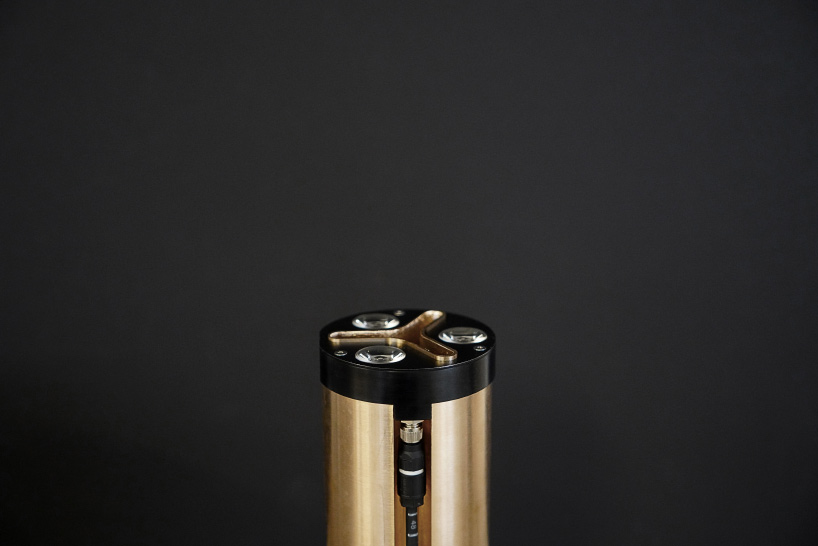
nozzle detail from the champs-elysées fountains by ronan & erwan bouroullec
image © atelier blam lemunier meyer
JL: today, more and more, the production of design and art plays a central role in the making of public intimacy. how do you see the responsibility in terms of the realities of design and construction?
AM: our role in the company is to carry through the ideas and principles of our collaborators. we have great respect for the people we work with, whether they are craftsmen who produce certain parts, designers or architects who convey their visions, or construction workers on site. as we all come from different perspectives, it’s extremely valuable for our professions to learn from each other. in that sense, we see our work as a close collaboration between many people, and for us, having respect for one another and sharing knowledge is a very important aspect of our field.
BL: we try to work with a real closeness to everyone. in our field, we should not forget the people behind the machines, because the quality of the project depends on them. that said, there is also this human aspect of our work that we try to defend in all of our projects.
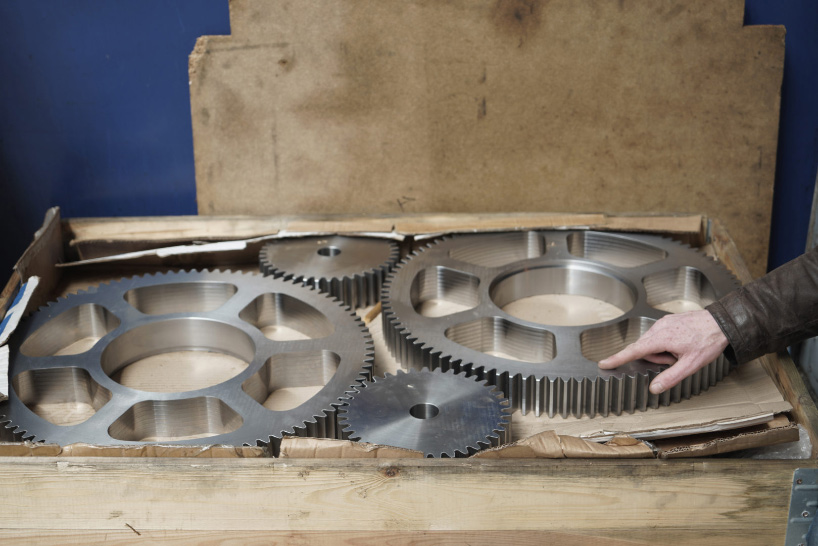
gear wheels for the champs-elysées fountains by ronan & erwan bouroullec
image © atelier blam lemunier meyer
JL: working with materials goes far back in history of mankind, are you influenced by past techniques and the knowledge of different cultures?
AM: our approach is not only digital because we do a lot of testings on a 1:1 scale — it’s very physical, in fact. working with scale and spending a lot of time on site helps us to envisage how and what we are going to create.
JL: your projects are particular in that they are both ephemeral and robust at the same time. is this interplay conscious?
BL: we spend a lot of time thinking about the relationship between an object and its environment. it’s important to produce pieces that are very integrated within their contexts. also, we work a lot on the lightness of the structures, which tends to show something fragile, and this may be a reason why the projects look ephemeral. indeed, we care a lot about the economy of materials. with the help of calculation, we try to target the exact amount of material needed to achieve a certain shape or function. when this is done well, it usually brings a natural equilibrium to the object. a good example is agger: this structure creates a feeling of toughness and solidity although it’s actually very light.
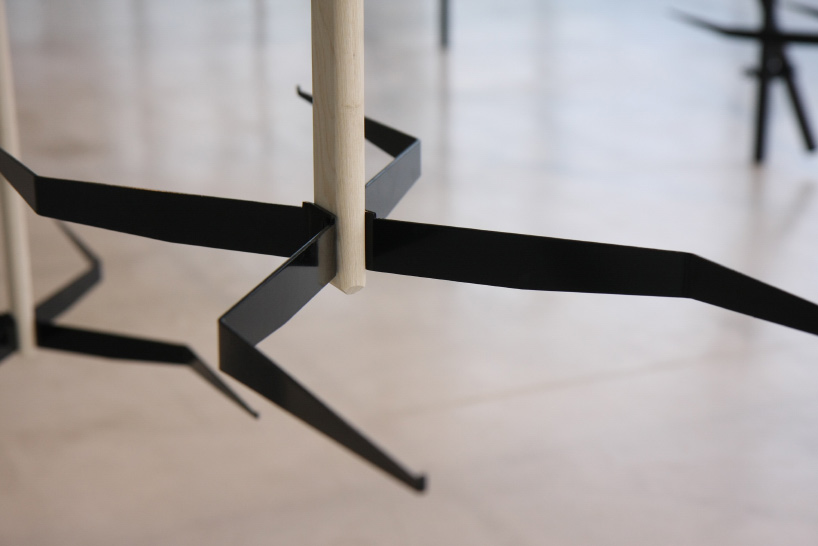
agger suspension detail – national day of architecture in primary school classes – nantes, france
image © atelier blam lemunier meyer
JL: your practice has a social aspect, but, as you mentioned, it also deals with the forces of nature. can you speak a bit more about this relationship in your work?
BL: these two aspects go together and are almost intertwined. as a society, we are looking to the future, and, when we design for the public space, we take into account on one hand the spatial sculptural ideas such as the finesse of the dimension, the right thicknesses, or the right diameters, and on the other, an environmental responsibility in terms of choice of materials, and how a piece is produced and placed within its context, thus encouraging reduced maintenance and a certain durability.
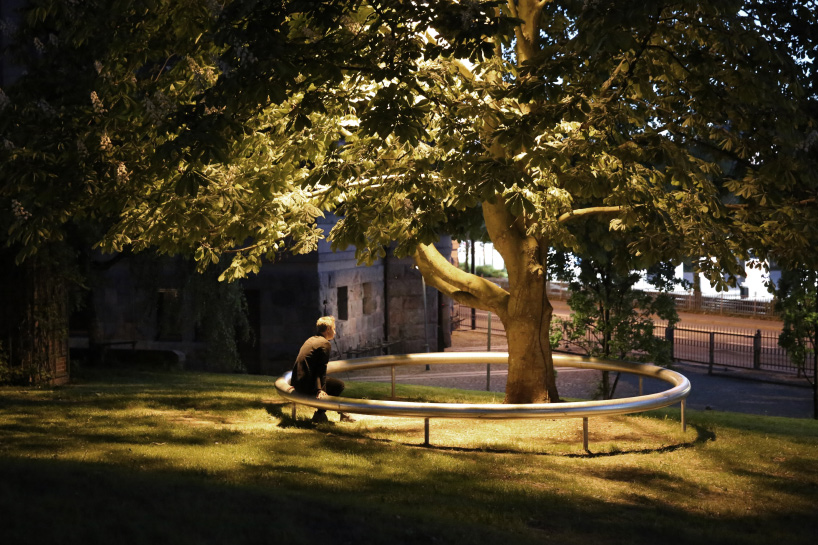
oui by ronan & erwan bouroullec – aarhus, denmark | read more here
image © studio bouroullec
JL: how did you achieve this in the project ‘dancing forest,’ which you developed for kengo kuma in rennes?
AM: the exterior surface of the wood is burnt until it’s charred. this is a very old technique, and its main advantage is that it creates a natural form of protection of the wood, without chemical treatment. this structure is very strong, people can climb on it — although it’s not supposed to be climbed on.
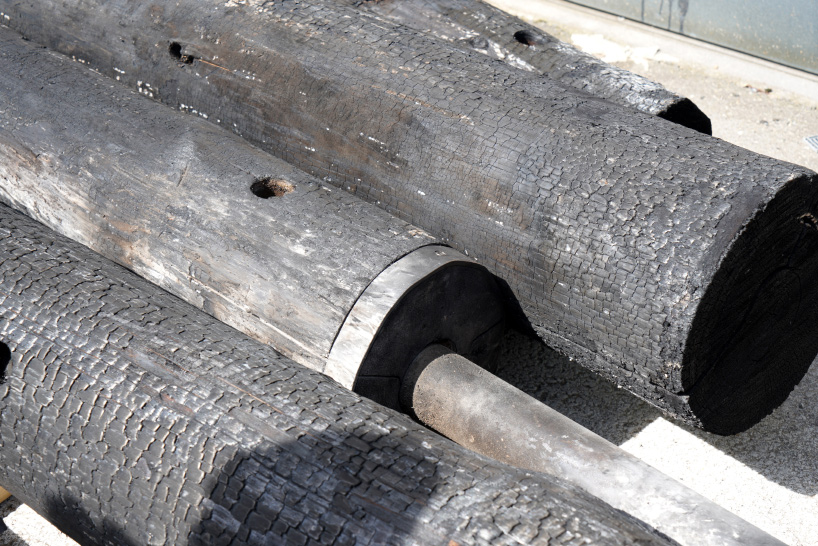
detail of the burning process – dancing forest by kengo kuma associates – rennes, france
image © atelier blam lemunier meyer
JL: one of the pioneers of architecture and construction, buckminster fuller, said: ‘there is nothing in a caterpillar that tells you it’s going to be a butterfly.’ obviously, your work has to be precise right down to each individual screw, but it also stands at the frontier of experimental research. are there surprising moments within the process of your work?
BL: one surprising step of every project is this certain moment when we start to feel the actual dimensions of the parts of a project. each diameter, length, thickness, and surface finish characterizes a particular part. we often change some of the parameters right after the first components are achieved in order to enhance some of their aspects.
AM: we’re working right now on a project with ronan & erwan bouroullec in rennes which is going to be a kiosk on the water. it is a particular object, which can easily find its place on the mainland but maintains its quality on the river at the same time. this element could become a barge one day, while the next day it’s no longer a barge. it’s fascinating to observe these evolutions.
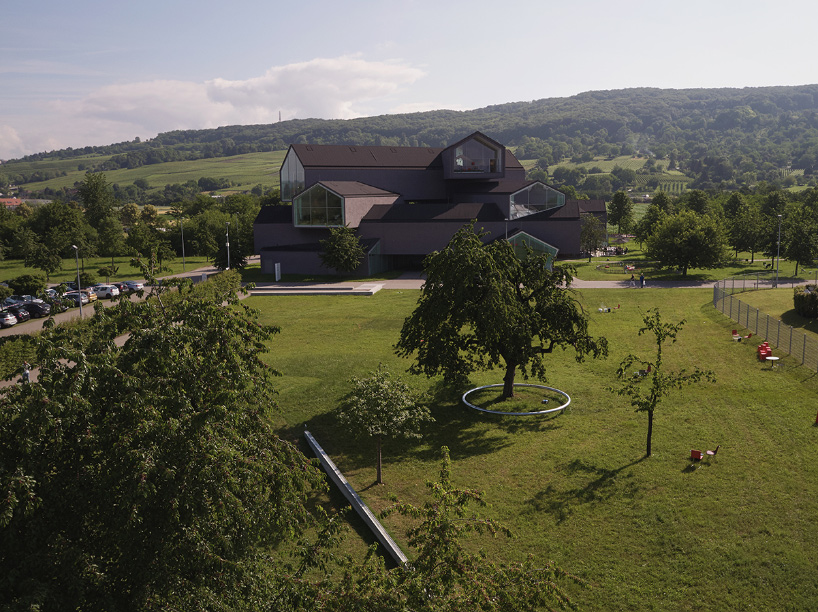
ring and ruisseau by ronan & erwan bouroullec, weil am rhein, germany | read more here
image © julien lanoo
JL: your clients are from different backgrounds and work on different scales. was there a project that particularly inspired you?
AM: we love working on a wide array of projects. this is the reason why we simultaneously work on scaled models and very large parts with almost the same level of detail. the variety of techniques and scales makes our job limitless. we are influenced by architects, engineers, and artists, as well as by crafts and industrial methods.
BL: our background plays a role, too: we pick up ideas and principles from various fields such as the natural, marine, or urban environment — from anywhere, really.
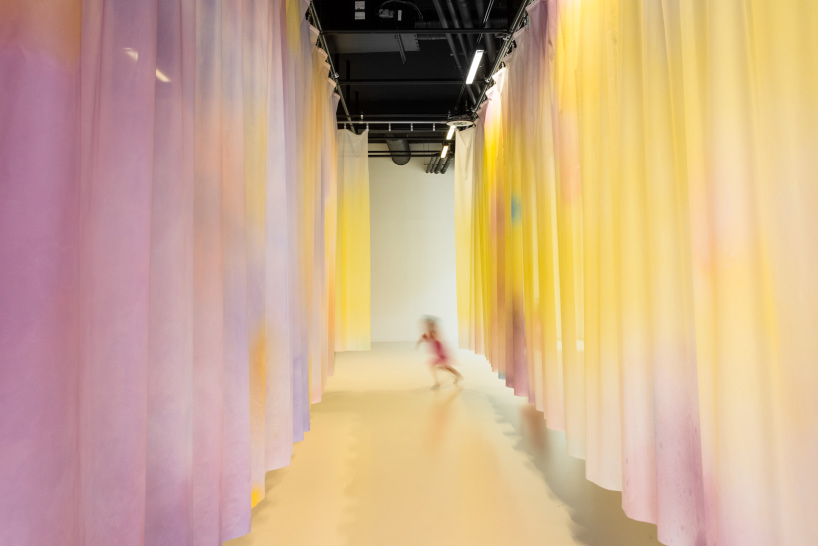
in girum imus nocte et consumini igni by bruno peinado – centre d’art le pavillon blanc, colomiers
image © photo y. gachet ville de colomiers
JL: you worked with artist bruno peinado on his piece ‘in girum imus nocte et consumini igni’. what was it about?
BL: this collaboration was a great pleasure. bruno peinado wanted to create a labyrinth in motion. we introduced the technique of an aerial conveyor to produce the motion, but the painting and the assembly were done on-site. bruno needed to share this moment with us during the installation and the project actually ‘constructed itself’ during the assembly. sometimes not all parameters are perfectly controlled, but this brings a certain degree of freedom to the artist and makes our job more creative.
PRODUCT LIBRARY
a diverse digital database that acts as a valuable guide in gaining insight and information about a product directly from the manufacturer, and serves as a rich reference point in developing a project or scheme.
